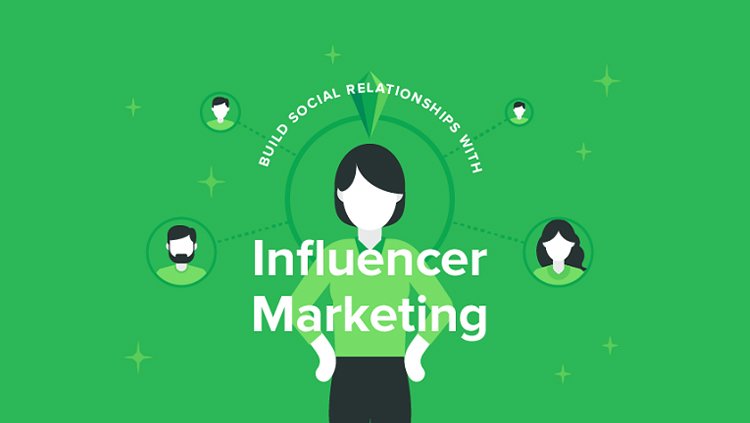Partnership announcements: Will influencer marketing remain influential?
The majority of industry participants believe that while the guidelines will make the business more accountable, they will have an impact on content production and narrative.

The Consumer Affairs Ministry released endorsement guidelines on January 20 in an effort to stop the growing use of influencer marketing fraud. According to these guidelines, celebrities, influencers, and virtual influencers must disclose any paid relationships they have with brands when promoting them on social media or risk legal repercussions.
According to the recommendations, anyone who violates them by failing to declare any material connections could face harsh punishment under the Central Consumer Protection Act of 2019. (CCPA). The CCPA has established a Rs 10 lakh penalty, which may go up to Rs 50 lakh, and a ban of 1 to 3 years for repeated violations of "endorsement of false marketing."
Brand collaborations, which are frequently misrepresented as organic posts and influence the buying habits of millions of customers, might get influencers into legal trouble and result in heavy fines going forward.
According to analysts, the shift has confused companies and influencers, which could have a negative effect on the influencer marketing sector going forward.
Notably, the INCA-e4m Influencer Marketing Report, published last year, predicted that during the pandemic, influencer marketing would grow at a 25% CAGR over the next five years, reaching Rs 1,275 crore in India.
However, the increase also brought about malpractice claims. Several Bollywood celebrities have been charged with violating the Advertising Standard Council of India's (ASCI) "Influencers Guidelines" by promoting businesses on social media without properly declaring that their posts were a result of business deals.
Since the ASCI's scope of authority is confined to self-regulation, it handles hundreds of these incidents each year, pushing it to introduce comprehensive influencer rules in 2022.
According to Manisha Kapoor, CEO and Secretary General of ASCI, "Influencer violations make up roughly 30% of the ads taken up by ASCI." This is true even though, according to INCA research, more than 90% of the brands have declared themselves to be ASCI compliant.
Despite breaking ASCI rules and numbering in the millions, nano- and micro-influencers continue to operate outside the ASCI network, according to industry experts.
"Storytelling will disappear."
According to Kapoor, the government's decision to impose harsh penalties and a ban will make the industry more responsible and clean up the ecosystem of hidden promotions, which have grown more prevalent over the past few years. The government and ASCI guidelines both draw a clear distinction between authentic and branded content.
A distinct viewpoint is held by Sahil Gupta, Lead, Influencer Marketing at Interactive Avenues, a Reprise Network Company and the digital arm of Mediabrands India.
Gupta contends that while the rules are crucial and desperately needed, they shouldn't be applied to the point where they interfere with the storytelling as a whole.
"While the majority of the common rules were already included in the ASCI rules, there are a few significant new changes that will affect content." The biggest effect would be on video content, where the influencer would need to call it out in both voice and video in addition to mentioning it in the description, according to Gupta.
Imagine an influencer presenting an emotive story and having to announce, "This video is in conjunction with the XYZ brand," the speaker said as he continued. If the storytelling also suffers, the post's traction will drop even further in addition to the platform algorithm's reduction in the dissemination of the branded post.
A social proof appeal is the foundation of influencer marketing. According to Vineet Bajpai, Founder & CEO of Magnon Group, the disclosure obligation would surely have an effect on the audience as well as brand emotions with regard to influencers, especially in the micro and nano segment.
Will engagement rates decline?
Why, therefore, do companies and celebrities refrain from disclosing their "paid partnership" agreements while promoting a business on social media?
There are several causes. Some brands don't want to appear overly commercial, which frequently turns off social media users and results in low engagement rates, while others want the material to appear natural.
Vineet Bajpai, Founder & CEO, Magnon Group, claims that when postings are labelled as "paid partnership" or "sponsored," engagement rates on social platforms immediately decrease.
Influencer engagement rates frequently fall when they publish paid content. This is due to the possibility that followers would perceive the content as less genuine and less likely to be pertinent to their interests. According to experts, a decrease in engagement may also result from the influencer's promotion of goods or services that are not well-suited to their audience.
In comparison to non-sponsored articles, sponsored posts by influencers have lower engagement rates, according to a 2022 study published in the Journal of Interactive Advertising. The study also discovered that the more followers an influencer had, the lower their engagement rates on sponsored posts were.
According to Swati Nathani, co-founder and chief business officer of Team Pumpkin, "Back when influencer marketing first gained popularity roughly ten years ago, the whole point for brands was to highlight the fact that their products were recommended by well-known individuals." Even today, we still use influencer marketing as a "middle of the funnel" activity to promote our businesses' sales in addition to their branding.
The new action definitely limits the perception of influencer material as being "organic," and, to be honest, it won't be well received by many marketers because disclosing the relationship with the brand undermines the justification for choosing influencers over performance marketing, she continued.
According to Sawant, in a situation like this, specialist platforms and talent aggregators like Talentrack become even more important because they assist brands with sophisticated curation and use influencers from many categories to fit their products and campaigns.
Aggregators and agencies will solidify their role as a conduit between these influencers and businesses, Sawant said.
"The king of content," continues Sawant, "is here to stay." There are several instances of branded material that keep viewers interested. In a word, great content from influencers in any field will continue to captivate audiences and win them over, endorsement disclosures or not.
In response to the question of whether or not celebrities will now take notice, Kapoor stated that "penalties and bans are expected to serve as deterrents to influencers who used to get away with just deleting social media posts following ASCI's warning for violation."
What exactly do the rules state?
The "Endorsements Know-Hows!" are a set of rules designed to make sure social media influencers comply with the Consumer Protection Act and don't deceive their audiences while endorsing goods or services.
The endorser must have actually used the goods and services before endorsing them. In the event of a default, consumers may file a lawsuit.
Disclosures for images should be overlaid over the image so that viewers may "see" them. In this case (of the video), disclosures should be included rather than just the description.
In accordance with the rules, disclosures must also be presented in video and audio formats. Disclosures should be prominently and constantly visible throughout live streaming.
The guidelines also offer a non-exhaustive list of incentives and benefits that would prove a significant connection exists: financial or other rewards; free goods with or without restrictions, including those received without request, discounts, and presents; entries for contests and sweepstakes; travel or lodging; bargaining in the media; coverage and honours; and any connection to one's family, friends, or employer.
They also apply to "virtual influencers," which are imagined computer-generated "people" or avatars who behave like influencers and have human-like features, behaviours, and characteristics.
"While the guidelines make an effort to clarify by stating that creators would be those who advertise products and services "with a strong influence" on the opinions or purchasing decisions of their audience, they don't specify the criterion or method for determining the presence of a "strong influence" by a creator. Without a clear definition of this threshold or criterion, it would be unclear if someone with a small number of followers (say, 100) would need to abide by these rules or not, writes legal expert Gaurav Bhalla in a blog post for Mondaq.












